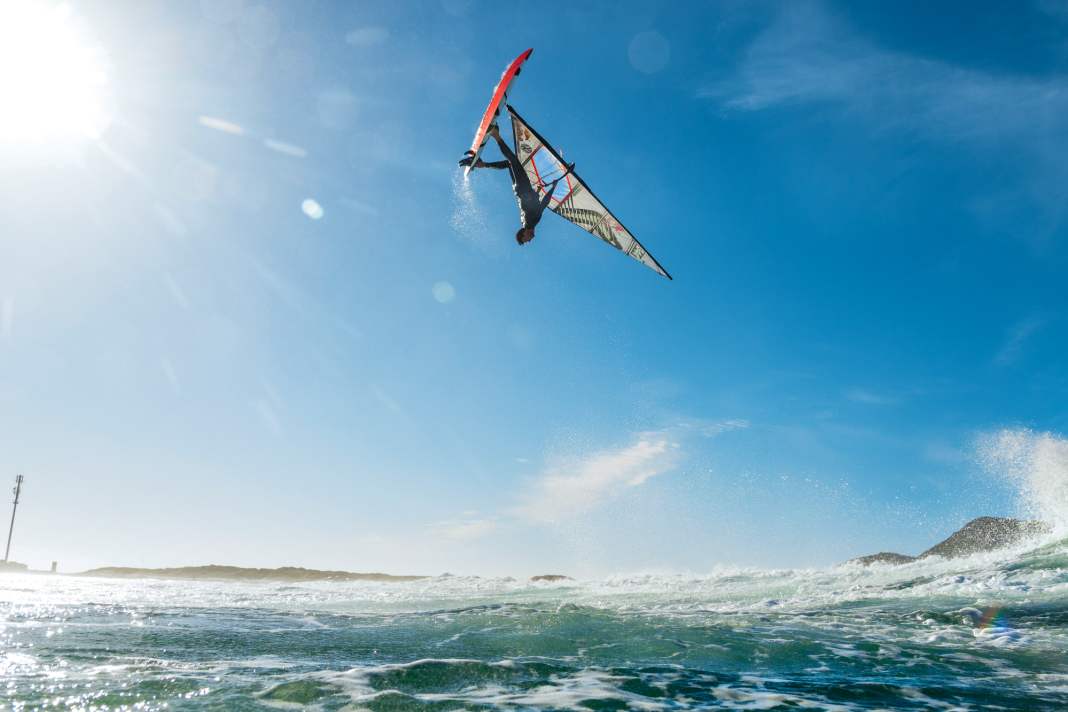





Professional wave surfers have never had it easy. In order to get sponsors, participation in competitions was and still is mandatory. The hard currency was always the results on the PWA Tour. This is where the best in the sport are gathered - those who make it here belong to the elite. In the wave discipline, however, the tour used to be limited to two or three events per year. This means training the whole year in order to surf three events. If you were unlucky with the draw or your own performance, the worst you could do was put in all that effort for one hour of competition per year. What's more, spots such as Pozo, Sylt or Tenerife can certainly offer decent conditions, but can also be an unworthy spectacle. Anyone who has ever seen the world's best on Sylt struggling through the shorebreak in a flat onshore westerly wind and barely being able to show a move knows what is meant.
On the other hand, there was always the IWT, the International Windsurfing Tour: Peru, Australia, Fiji, Hawaii - the list of tour stops always read like a dream come true for every windsurfing pro. Behind the dreamlike façade, however, IWT events were usually rather spartan: there was neither prize money nor professional judges. In the end, there were perfect conditions for every participant, but the bottom line was a big financial loss. For many years, the principle was: professional sport in hobby conditions (PWA) or hobby sport in professional conditions (IWT)?
The desire to reconcile both worlds is nothing new. For a long time, however, those responsible at PWA and IWT were not quite on the same wavelength, to use a metaphor. In this respect, it was a minor sensation when PWA and IWT announced a joint wave tour at the beginning of the year. The Dream Tour of windsurfing. So will everything be alright now? We asked two pros, Lina Erpenstein and Philip Köster, for an interview and asked them what they expect from the new tour - and what challenges there might be.
To what extent did the merger of IWT and PWA surprise you?
Philip:Well, it didn't come as a complete surprise to me, as it had been under discussion for a very long time. Unfortunately, nothing has happened so far. There were only two or three events a year for us wavers. The problem was always that one bad heat ruined the ranking for the whole year, which was extremely frustrating.
You won two out of three events in 2022, but a bad heat in Cape Verde put paid to any title ambitions.
Exactly. In general, everything becomes fairer the more chances you have. In this respect, a big wave tour with nine events, as is currently planned, is certainly an advantage. The problem will of course be that it will completely blow the travel budget of many participants. The top five to top ten will be able to do it, beyond that it will be difficult.
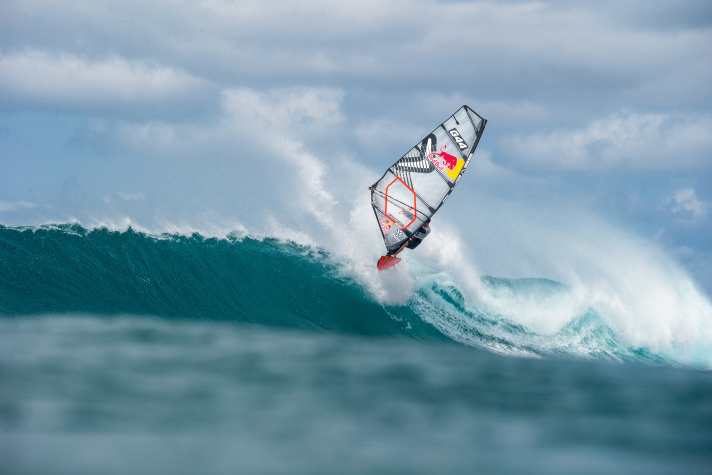
Lina, the problem is probably even more serious for the ladies, isn't it?
Lina:In general, the merger is a huge opportunity. In the past, I think it was even more difficult for women than for men. That's why I think it's good that we're being accommodated. There are six events for women, and the best three results count towards the final standings. So theoretically you can only ride three events and end up as world champion. For the men, there are nine events and four results that have to be entered. Of course, you can't over-tactic. Because if you miss events at the start of the season and there's no wind at the end of a World Cup and you don't get enough results, you're out of the title race. I'm curious to see how this will affect the number of women taking part.
The PWA is a riders' association. Every year there is a meeting at the Sylt World Cup where problems and perspectives are discussed. Despite this, nothing fundamentally new ever happened for many years. Was there a lack of ideas? Or a strategy?
Lina (laughs):Yes, PWA meetings are a borderline experience. Many a fantasy is debated there. Unfortunately, it's not always productive.
Philip (laughs):Yes, and Ricardo(Campello, the ed.) shouts in ...
... and would generally like to be picked up by the PWA aeroplane. But seriously: who is the driving force for change on the driver's side - and why has nothing progressed for so long?
Philip: I tend to stay out of it. Robby Swift is certainly one of the driving forces on the driver's side. For many years, only the status quo was managed with the same events every year. If you only surf three events every year and there's not even a functioning live stream, it's hard to feel like a professional athlete. The more opportunities we have to show ourselves, the greater the media interest - and the easier it will be to find sponsors in the future.
If you only surf three events a year, it's hard to feel like a professional athlete." (Philip Köster)
Lina:We simply never got out of this small format. But that was also due to the fact that the PWA is a riders' association. There are windsurfers at the table, not trained marketing experts or managers. There were always lots of ideas, but they were rarely realisable. In my eyes, it has to be about the external image first. If the best athletes come together at the best spots, the action will be breathtaking. This is also more interesting for external sponsors than a tour with the same three events and mediocre action. The PWA has always emphasised professional judging, prize money and reasonable conditions. Of course, this has swallowed up a large part of the budget. There was often not enough money for the external presentation - such as the live stream. At the IWT, it was the other way round. The focus was on the external image, but behind the scenes it was less professional. I hope that we can now combine the best of both worlds.
Even with the Dream Tour, budgets are not going to skyrocket for the time being. Do you see a danger that standards will crumble now? Nobody wants to be judged by their biggest competitor's mate, do they?
Philip:Of course, judging is important for every rider - and at the IWT, riders judged each other. But as far as I know, PWA judging is set to become the standard.
Lina:It will certainly be a bit experimental at the beginning. It won't be easy to reconcile both worlds. But it will also improve over time. First of all, it's important that it happens at all.
What challenges does the new tour schedule with nine Wave events pose for you personally?
Philip: For me, of course, that means travelling more. I am now also a father, but travelling is of course part of my job. There will certainly be a few stops where my family will accompany me, for example to Maui, Sylt or Tenerife. However, I will probably only fly to Japan, Chile and Fiji with my caddy. But you always have to reckon with the fact that the tour calendar, which looks so great now, will shrink a little over the course of the year. Many events have not yet been finalised.
Lina:I think I speak for all the women on the tour when I say that the biggest challenge will be the high travelling costs. And it will also be difficult for the men beyond the top 15 to cope with this. I definitely won't be able to travel to all six events. You have to think carefully about what makes sense. Where are the conditions right for me? Where is the risk of a doldrums event lowest? Overall, however, I believe that the new spots are a great opportunity for women's surfing in particular. If women can surf at spots as blatant as Cloudbreak (Fiji, the ed.), this will significantly improve our standing with the media and sponsors.
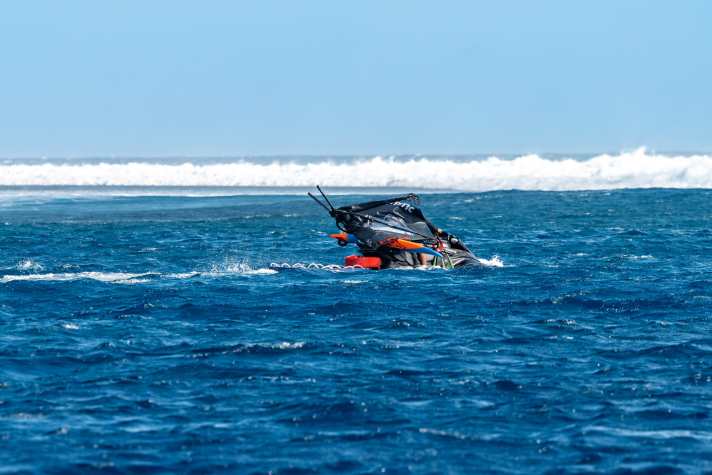
It should also have an impact on your personal training. You are both the absolute best in the world in typical Euro conditions with wind from the left. Different things will be required in Peru, Japan or Maui. How are you preparing for this?
Philip:I'm not changing much about my training now, but of course I'm trying to train more with the wind from the right. It's not as if I haven't been to Maui to train more often. Unfortunately, I've often been unlucky and rarely had wind. But it's not far from the Canary Islands to Morocco, so I'll definitely be going there more often in the future. I already know Japan, I have fond memories of it. I did my first double loops there with the wind from the right. The Japanese surfers stood on the beach and kept shouting: "Double! Double! Double!" I had to pull it off (laughs).
There was a little video from that day where you do perfect double loops with wind from the right. It didn't look like you tried it for the first time that day.
Yes, but the day really hurt! (laughs). It's a great spot, I'm looking forward to it.
Everyone has to get out of their comfort zone. That makes the new tour very interesting." (Lina Erpenstein)
How are your wind-from-the-right skills, Lina?
I'm working on it. Of course, you choose your training goals differently when you know that Japan or Maui are on the agenda. I spent several weeks in Brazil this winter and only surfed the wind from the right. At the beginning, it was like being brought back down to earth. I had to get completely out of my comfort zone. But after a while you get used to it - and now even pushloops work quite well. Getting the feeling of jumping in the first place is the biggest challenge. In this respect, I find it impressive that Philip seems to be jumping double loops on the right immediately after a day of practising.
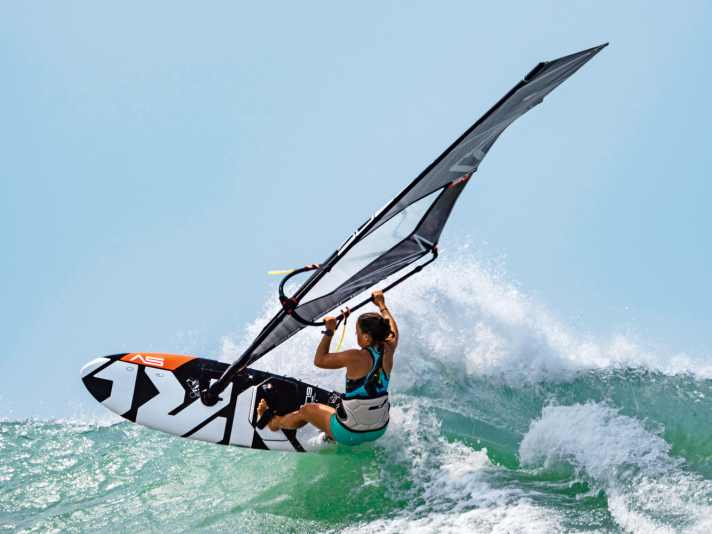
Philip, how long would it take you to really get into the groove on the "wrong side" and reach the same level as with wind from the left? After all, you have already achieved a top ten result at the Aloha Classic on Maui.
Philip:Phew, difficult. I've learnt to wind from the left since I was a child, so I don't think too much about it. I always realise that I get into the flow after eight to ten days. Then double loops work for sure, but I still don't see any land with pushloop forwards. This has nothing to do with the fact that I'm afraid to try things out. My head knows exactly what it needs to do. But the technical realisation is just not as perfected because I don't have the training hours.
With Fiji, Cape Verde and Maui, iconic spots are on the agenda where it's not just about courage and skill, but also a lot about experience. What prevails for you: anticipation or respect?
Philip: That balances each other out. Cloudbreak in Fiji is a real challenge for every pro windsurfer. The wave is extremely powerful and fast. I flew there some time ago for a fortnight to train - at least that was the plan. I had to leave after three days because I had destroyed all my equipment. That's why I fly to World Cups like this with seven or eight boardbags full of stuff. My caddy Jorge is already looking forward to it (laughs). You also have to have more different boards up your sleeve, of course. You simply can't ride the same boards on Maui or in Peru as you can on Sylt or in Pozo. Of course, I had already ordered my boards for the new season when the new Dream Tour was announced. That's why I have to go to Thailand soon to pick up another load of boards.
I wanted to train in Fiji for a fortnight. After three days, I had destroyed all my equipment." (Philip Köster)
Lina: I'm pretty familiar with my equipment and actually ride the same board, the Severne Nano, in almost all conditions. I only ride the Pyro in conditions at the lower limit because it has a bit more glide. So, luckily, the changeover is limited for me.
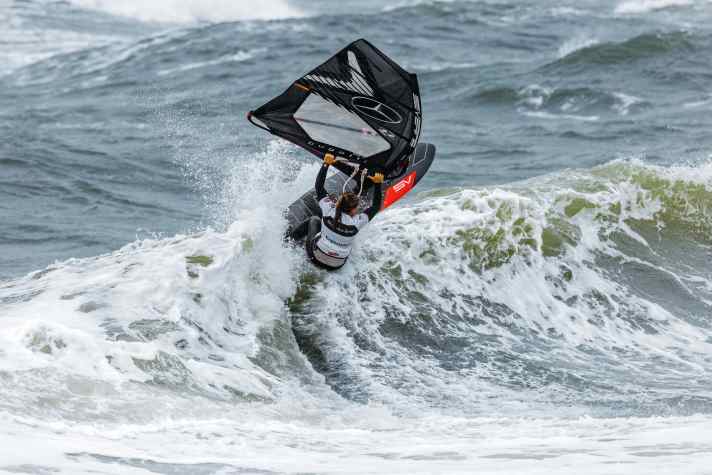
What do you think is important if you want to become champion in 2023?
Lina: I think that double loops and wave 360s will soon be shown for women too. That has to happen! And I want to be part of it (laughs). I'm working on my loop technique and have already completed my first double attempts in Denmark. I'm still lacking a bit of dynamism in the rotation, but it's a project I'm going to tackle. Sarah Quita Offringa is also already practising and I hope that we will push each other a bit this summer.
Who are your sparring partners on the water?
Lina: At my home spots, of course, I'm on the water a lot with men, but during the tour stops I really enjoy training with Sarah Quita. She's a competitor, but a great guy to have fun with. And when I see how good she is, it spurs me on at a different level than when I'm on the water with the guys.
Philip, you're a bit of a loner. People never used to see you training in public before the event. Has that changed?
No, not really. I live in Pozo now, but I've always done my own thing. My favourite thing to do is surf with Jorge, my mate and caddy.
So you're pushing Jorge. But who is pushing you?
I don't necessarily need the constant battle. And to be honest, I rarely see my main rivals like Brawzinho and Riccardo Campello. They train on Maui, I train on Gran Canaria. That's why the first event is always a bit exciting, because that's when the cards are put on the table.
Where will the men's level go in 2023, Philip? Will we finally see the first triple forward?
I think about it from time to time. But, phew, it's difficult.
I can tell you from my own experience that the inhibition threshold doesn't exactly diminish with age.
Yes, that's true (laughs). But I'm feeling more and more comfortable with my doubles and stalled doubles and will certainly try the triple loop again. But the triple will never become a competition move, that's for sure. I would love to do it, but the risk is just too high in competition.

